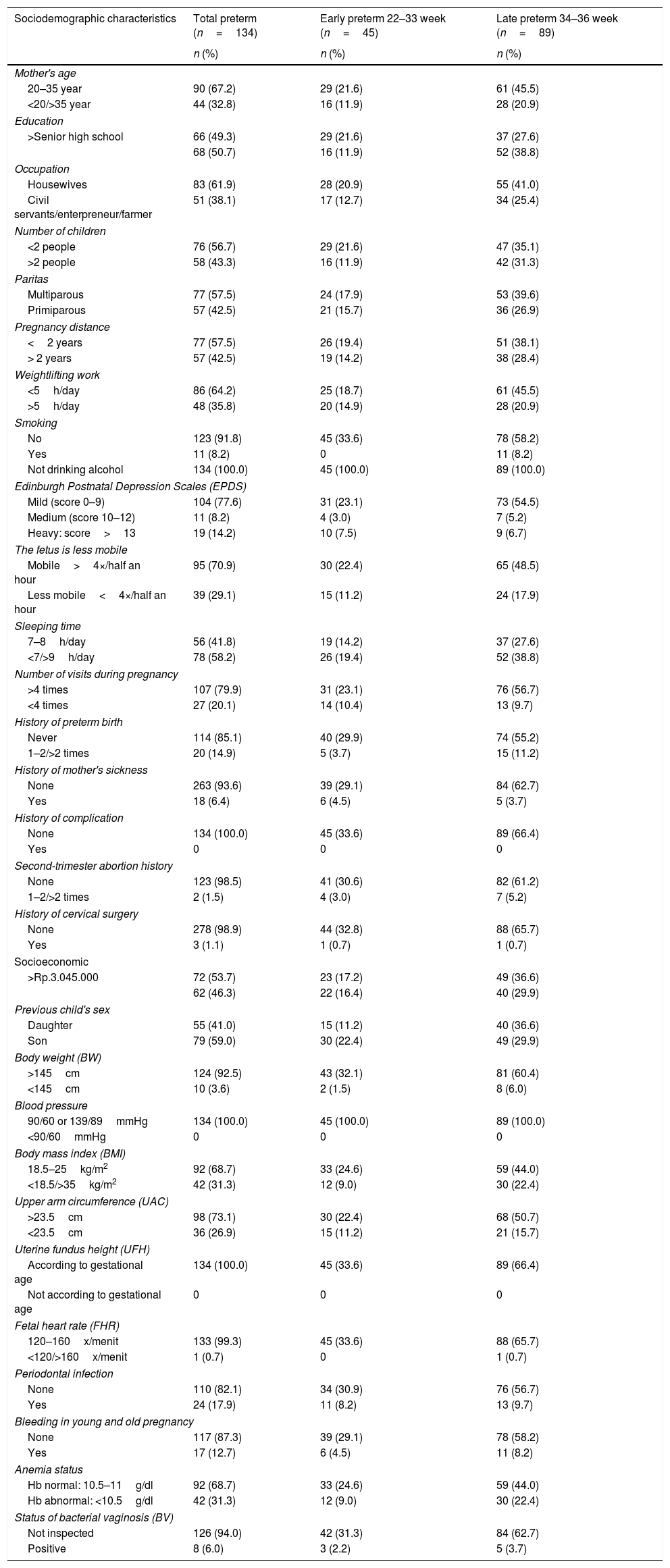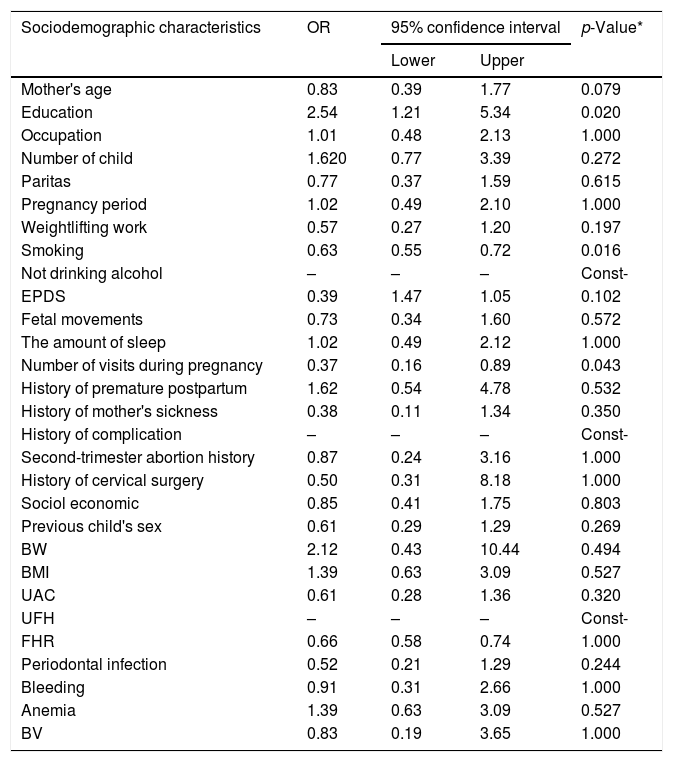To determine the relationship between early preterm birth (22–33 weeks) and late preterm birth (34–36 weeks) labor with sociodemographic characteristics in primiparous and multiparous mothers.
MethodsDesign of observational analysis on 134 mothers after preterm postpartum in East Java using frequency analysis. The case samples were: primiparous and multiparous mothers after preterm postpartum recorded in medical records at 8 hospitals, namely Soewandhi hospital, Universitas Airlangga, Islam Jemur Sari hospital, Sidoarjo hospital, Madiun Sogaten hospital, Jombang hospital, Ibnu Sina Gresik hospital, and Ngawi hospital. The instrument used in this study was a data collection sheet in the form of a questionnaire.
ResultsAmong 29 sociodemographic characteristic variables there were only 3 variables related to early preterm birth and late preterm birth with p<0.05, i.e. education was (OR 2.54, CI95%; 1.21–5.34, p<0.020) from 134 mothers including 66 mothers (49.3%) who have higher education and 68 mothers (50.7%) have low education, smoked mother was (OR 0.63, CI95%: 0.55–0.72, p<0.016) including 123 mothers (91.8%) who did not smoke and 11 mothers (8.2%) had smoking habits, and ANC visits during pregnancy (OR 0.37, CI95%: 0.16–0.89, p<0.043) of which there were 107 mothers (79.9%) who visited ANC>4 times and 27 mothers (20.1%) who visited ANC<4 times.
ConclusionsThere was a relationship between early preterm birth and late preterm birth with maternal sociodemographic characteristics, i.e. education, smoking, and the number of ANC visits during pregnancy. This can be used as the basis for subsequent studies in the prevention of sociodemographic disorders in primiparous and multiparous mothers.
Artículo
Comprando el artículo el PDF del mismo podrá ser descargado
Precio 19,34 €
Comprar ahora








